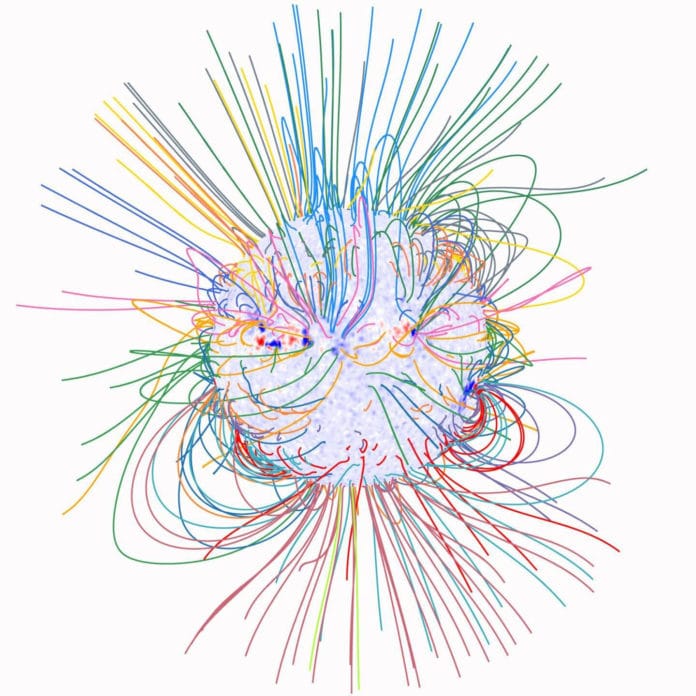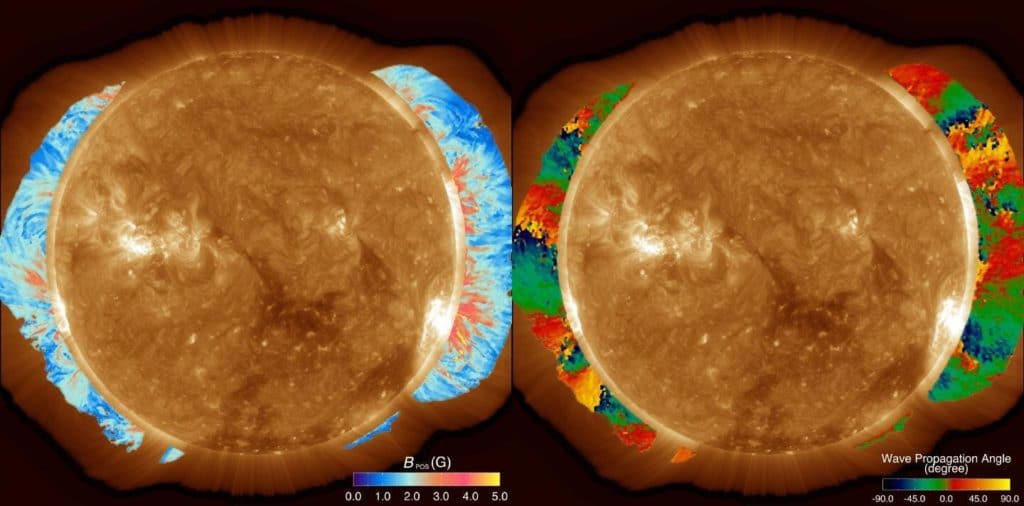Using observations from the Coronal Multi-channel Polarimeter, an instrument designed by Dr. Steve Tomczyk at the National Center for Atmospheric Research, USA, an international team of scientists at Peking University has recently measured the global magnetic field of the solar corona for the first time.
The magnetic field of the sun plays a vital role in shaping the solar atmosphere. Solar flares, coronal mass ejections, high-speed solar wind, and solar energetic particles are all solar activity forms. The solar magnetic field drives all solar activity.
Due to the magnetic coupling of different atmospheric layers, information on the whole atmosphere’s magnetic field is required to study the transaction between the solar plasma and the magnetic field. Notwithstanding, the solar magnetic field’s routine estimations have just been accomplished at the photospheric level (solar surface).
It has been a century that the first measurement of the solar magnetic field was taken. Still, there is a lack of knowledge of the upper solar atmosphere’s magnetic field, especially the corona, which impedes our complete understanding of solar magnetism and its interaction with solar plasma.
Almost two decades ago, coronal seismology or magneto seismology was introduced for coronal magnetic field diagnostics. The method uses magnetohydrodynamic (MHD) oscillations or waves observed in coronal loops or other coronal structures.
From the MHD theory, the observed wave boundaries can gather the average magnitudes of the magnetic field in the oscillating structures. Nonetheless, these oscillations/waves are sometimes seen in small regions of the corona, and in this way, their potential for magnetic field diagnostics is limited.
CoMP is a coronagraph with a 20-cm aperture. Using the Fe XIII 1074.7 nm and 1079.8 nm infrared spectral lines, it can observe the solar corona range of about 1.05 to 1.35 solar radii from the solar center through imaging spectroscopy and spectropolarimetry. The Doppler image sequence obtained from CoMP observations often reveals the prevalence of propagating periodic disturbances, indicating the ubiquitous presence of transverse MHD waves in the corona.
The team has successfully applied the magneto seismology method to these pervasive waves. They have extended the previously developed wave-tracking technique to the whole field of view and obtained the wave phase speed’s global distribution. The intensity ratio of the two Fe XIII lines is sensitive to electron density and has been used to derive the global map of coronal electron density. Combing the wave-tracking and density diagnostic results, they have successfully mapped the global corona’s magnetic field.
For the first time, scientists obtained a global map of the coronal magnetic field via actual coronal observations.
Scientists noted, “The technique can be used to obtain global coronal magnetic field maps routinely, filling in the missing part of the Sun’s global magnetism measurements.”
“Along with measured photospheric magnetograms, these synoptic coronal magnetograms will provide critical information to advance our understanding of the magnetic coupling between different atmospheric layers as well as the physical mechanisms responsible for solar eruptions and solar cycle.”
Journal Reference:
- Z.-H. Yang et al. Global maps of the solar corona’s magnetic field, Science, 369, 694 (2020). DOI: 10.1126/science.abb4462
- Z.-H. Yang et al. Mapping the solar corona’s magnetic field through magneto seismology, Sci China Tech Sci (2020).

